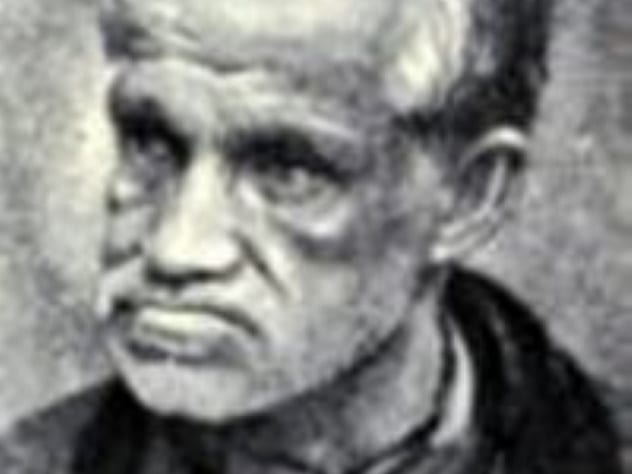10 ‘James Brown’ Sold Out Florida With A Kidnapped ‘Aretha Franklin’
Mary Jane Jones should have stuck to singing gospel. She never could have reached stardom if she did. Kicked out of her church for singing the “Devil’s music,” Jones moonlighted as the in-house entertainer for a small nightclub, under the stage name “Vickie Jones.” Her powerful renditions of contemporary soul songs attracted the attention of Lavell Hardy.[1] Hardy was somewhat famous in his own right for the soul record “Don’t Lose Your Groove.” Hardy’s brush with fame peaked on No. 42 on the Cash Box singles chart. By 1969, though, most of his work came from being a James Brown impersonator. Noting Jones’s resemblance to Aretha Franklin, Hardy thought he could enlist her as an impersonator, too. Tricking her into believing she was going to open for the real Aretha Franklin in concert, Hardy got Jones to agree to travel with him. Then he kidnapped her. Under the threat of murder, Hardy forced Jones to perform as the fake Aretha Franklin in concerts around Florida. During the day, Jones was locked in her hotel rooms. At night, she was singing in front of thousands. Her captor and manager was making a fortune. In Fort Myers, the audience of 1,400 booed as the imposter walked out. Her stirring voice of “Since You’ve Been Gone (Sweet Sweet Baby)” put the doubters to shame. As naturally talented as she was, Jones was still not the name on the ticket. When the real Queen of Soul stopped in Florida, she alerted the local sheriff about the fraud. Shortly thereafter, Jones and Hardy were arrested. As the victim of the plot, Jones was released. Publicity from the kidnapping launched her career. In an ironic twist, Mary Jane Jones became so popular in her own right that people started impersonating her.
9 Frederick Lenz’s Weird Cult Made Even Weirder Electronica Music
To many in Silicon Valley, Dr. Frederick Lenz III was a charlatan, a man who launched multiple software companies through lying and deceit. Others saw Lenz, or “Rama,” as he preferred to be known, as an enlightened savior through his syncretic version of Buddhism, Hinduism, and New Age spiritualism. Both sides agreed that Lenz was more than just a crazy religious zealot. Foreseeing the upcoming technological boom in computing, Lenz placed followers in all fields of software development and Wall Street brokerage firms. The only rule was that investors had to give half of their gross revenues to companies owned in Lenz’s name. Described by former members as having run a pyramid scheme, Lenz raked in millions of dollars a year. Despite all of this, Lenz’s real crime was probably his music career. With all of that money floating around, Lenz invested heavily in his music. In total, Lenz released 14 albums. Most focused on the tenets of Buddhism. Others were surreal techno. Case in point, take “What is Dancing?” The music video starts off normal enough. The cardigan-cozy smile of Fred Lenz greets the viewer as a seagull glides by a setting sun, a typical meditative lull. Immediately, the video smash cuts to an asteroid belt orbiting Dr. Lenz as he maintains eye contact with a plastic cow. Gawky claymation pelicans, rats, and hippos join a choir of scantily clad backup dancers belting out the titular question. Keytar solos accompany a break-dancing dreadlocked robot. Other scenes, like a flirtatious alien or a lip-syncing Buddha, lack explanation. If Lenz really was a messiah, then it was certainly a strange vision. His faltering music career was the least of his problems. Members came out in the late 1990s with stories of widespread fraud and sexual coercion among his members. In 1998, following a wave of bad press, Lenz and a girlfriend swallowed 150 tabs of Valium in a suicide pact. Only Lenz died. He was 48.[2]
8 Charles Peace Was An Acrobat By Day And A Burglar By Night
Charles Peace never lived up to his surname. It is a stretch to call an embittered cat burglar who terrorized England during the mid-1800s very peaceful. Like all good supervillains, Peace’s crime spree has an origin story. Raised by an animal tamer, Peace wanted to be an entertainer himself. He planned to finance these dreams by temporarily working as a collier. In a freak accident, the factory machinery shot a piece of red-hot steel through his leg, permanently disfiguring it. Thrown out of the hospital in crutches, he swore revenge against the wealthy elites. The accident did not leave him totally immobile. He still toured England as a noted violinist and Shakespearean actor. Productions allowed him to travel to cities across the country. By the 1850s, Peace had begun to break into houses. Another pursuit, acrobatics, proved even more helpful for breaking and entering in the middle of the night.[3] Despite his leg, Peace’s dexterity was well-honed. Baffled by the scale of his break-ins, the police were convinced at one point that it was a gang of thieves. Peace was ultimately convicted of burglary more than once during his criminal career. In August 1876, he murdered a police officer who caught him fleeing a house. In October of that same year, he killed his lover’s husband. In 1878, he was finally arrested. He was hanged the next year.
7 Elmer Edward Solly Stole A Dead Musician’s Identity And Performed
Sha Na Na was never that big of an act to begin with. Today, they are probably best known for their incongruous performance at Woodstock, where the face-melting guitar gods Carlos Santana and Jimi Hendrix shared the same bill with a 1950s doo-wop revival group. During the 1970s, interest in the hits of the Eisenhower administration reemerged. Sha Na Na parlayed this blip of nostalgia into a variety show and a spot on the Grease soundtrack. Between the nearly 50 members of the band’s history, most of the musicians were rather anonymous. One exception was Chris Donald. Taking the stage name “Vinnie Taylor,” Donald played lead guitar on a few of Sha Na Na’s albums until his heroin overdose at age 25 in 1974. Five years earlier, Elmer Edward Solly had murdered his girlfriend’s two-year-old baby in a drunken rage. He was sentenced to 15 to 20 years in a maximum-security prison. Solly escaped while on furlough and eventually assumed Taylor’s identity. He took a new stage name, “Danny C,” and performed music as such.[4] When confronted by Sha Na Na members, “Taylor” said that he’d faked his death under orders from the CIA. Solly’s lies finally caught up with him in 2001. Remarkably, he only spent two more years in prison.
6 The Comedian Con Artist Who Fueled The Satanic Panic
Mike Warnke was a Christian who pretended to be a Satanist. He was an unfunny person who thought he was a comedian. With no talent in either area, he changed both forever. Known as “America’s Number One Christian Comedian,” Mike Warnke found unprecedented success in the 1980s comedy boom by combining religious screeds with canned one-liners. Before Warnke, there was nothing really known as the Christian comedy circuit. Careers as varied as Sinbad, Pete Holmes, Chonda Pierce, and Patricia Heaton have all been launched on these circuits. Spurred on by the fact that Warnke managed to sell more than one million records, Tennessee’s governor declared June 29, 1988, as “Mike Warnke Day.” Warnke was not a man worth memorializing. Before comedy, Warnke tried his hand as a different type of entertainment. In 1972, Warnke wrote The Satan Seller. The book outlines Warnke’s alleged participation in gruesome child slayings for a Satanic cult’s ritual. Every detail was fabricated.[5] Scamming millions, Warnke fostered paranoia wherever he went. Despite lacking any credibility, Warnke laid the foundation for the Satanic panic of the late 1980s and early 1990s. Even though the FBI found no evidence of large-scale abuse in daycares, dozens of people were arrested for allegedly consulting with Satan. Warnke’s scheme kept on going until 1991, when a Christian magazine exposed the truth. However, the damage was done. The same year Warnke was revealed to be a con artist, Dan and Fran Keller were falsely accused of Satanism. They ended up in prison for 21 years, while Warnke was never punished.
5 Attila Ambrus Was Better At Bank Robbery Than Hockey
There are a lot of things one could call Attila Ambrus. “Quitter” is not one of them. Born in Transylvania in 1967, Ambrus smuggled himself to the country that would eventually embrace him as a national hero by hiding in the undercarriage of a passenger train. Arriving in Hungary in 1988, Ambrus naively thought he should play for Ujpest TE (UTE), the leading Budapest hockey team. Practically from the beginning, the faults were obvious. Barely scraping by, Ambrus lacked the funds to buy his equipment. Sleeping in the broom closet, he worked around the stadium as a janitor. Embarrassed around his teammates, he swore to himself to never go without money again. He should have been embarrassed for other reasons. With virtually no hockey experience to his name, many consider Ambrus the worst goalie in professional hockey history. His tryouts were so bad that the other players broke his nose for fun. In one game, the opposing team scored 23 goals on him. That’s more than some teams make in a season. Attila lacked concentration; he had other things on his mind. UTE’s schedule allowed Ambrus to tour across the country. Along the way, Ambrus robbed the local banks. Nicknamed the “Whiskey Robber,” Ambrus stuck the tellers up while swigging booze. Exceptionally well-mannered, he always handed the female cashiers flowers in the middle of the heists.[6] He had no reason to fear. Most Hungarian banks did not have guards or alarms, and the police were equally inept. In 1999, he was finally arrested, only to escape out the window by tying bedsheets, shoelaces, and phone cables together a few months later. The ensuing manhunt involved 400 police officers. By the end, Ambrus had committed a total of 27 heists, landing him with a roughly 100 million-forint total windfall, or about $500,000.
4 The Cocaine-Fueled Robbery Behind The Expensive Gay Porno
George Bosque was not always a criminal. As a kid, he dreamed of joining the police. He thought this was a way of furthering his conservative beliefs. A self-described Nazi, Bosque wrote letters criticizing “nudity, homosexuality and the glorification of narcotics.” Evidently, he had a change of heart.[7] Bosque never did become a police officer. Instead, he became the next best thing: a Brink’s security guard. He started up an office romance with his coworker, Carl Denton. Bosque did not handle the breakup well. Feeling rejected, he robbed a Brink’s van of $1.85 million in 1980 and went into hiding in a place no one would have ever suspected, the New York City underground gay subculture. This small fortune financed a crippling cocaine addiction. After that, he got a bit more ambitious. In 1981, Bosque made Centurians of Rome. (Yes, that’s how it was spelled.) With a budget of nearly $200,000 (around $600,000 in today’s money), the movie is an elaborate gay pornographic film set in ancient Rome. Thirty-two performers were paid each day with suitcases full of money and piles of drugs. This did not lead to a fruitful production. None of the strippers cast to play the centurions knew how to ride horses. A coked-up Bosque would constantly rewrite the script to insert his own terrible lines. These lines were so bad that the crew couldn’t help but laugh at him. One crew member could not control his laughing fit and fell down, collapsing a support post. Once Bosque ran out of money, production came to a halt. The movie was eventually released before Bosque was arrested 15 months later.
3 Paul Bateson Was The Real Monster In ‘The Exorcist’
In 1973, The Exorcist was the scariest movie in America. Nobody could have predicted how much more frightening it would become in the years that followed. In a movie with demonic possession, unnatural contortion, and pea soup vomit, the most disturbing scene is surprisingly banal. During the film, Reagan’s family and doctors are puzzled about her condition, so they administer a spinal tap and MRI. In between shots of squirting blood and a young girl’s scream, the audience sees the quick blur of young New York University radiologist Paul Bateson playing a bearded technician. Paul Bateson’s career did not take off after his cameo in The Exorcist. The lack of success following the film was a contributing factor to his mental decline. His brief stint with acting led to a much longer stint with alcoholism. Clouded by alcohol, Bateson reportedly couldn’t remember everything he did between 1975 to 1977. Forgetfulness in that window is particularly worrisome, because investigators believe he killed at least six people during that time. Bateson, allegedly, would pick up gay men at bars. Back at his place, he dismembered them, disposing of their bodies in the Hudson River. The exact number and identities of the bodies is still unknown. Exorcist director William Friedkin was deeply ashamed that one of his movies featured a possible serial killer. As a form of atonement, Friedkin made Cruising, a movie about a cop who hunts down a serial killer responsible for the slayings of gay men at S&M clubs.[8] In a roundabout way, Paul Bateson’s murders impacted cinema more than any of his acting did.
2 Celebrities Loved Tony Alamo’s Jackets And Ignored The Child Cult
In 1987, Michael Jackson released the album Bad. Jackson’s own troubled legacy with children would be revealed in the upcoming years. Yet, at that moment, the most abusive thing on the album cover was not Jackson but the jacket he was wearing. Jackson was far from the only celebrity who wore a jacket designed by Tony Alamo.[9] Celebrities as varied as Mr. T, Burt Reynolds, Dolly Parton, and Mike Tyson have been spotted wearing Alamo’s line of bejeweled denim jackets. Alamo’s jackets were so popular that he became a multimillionaire in a matter of years. Bolstered by that money, Alamo founded an abusive cult. Tony Alamo turned a failed career as a pop singer into a lucrative career as a preacher. His sermons centered on the inevitable apocalypse caused by Catholic overlords. Religion-tinged threats were directly related to his jacket empire. Many of his employees, like all of his ten wives, were underage. For six months, Alamo motivated his followers by displaying the embalmed corpse of his first wife, Susan, who had died of breast cancer in 1982. Each night, the child laborers gathered in their workshop around the body. Hoping to bring Susan back to life, the children prayed and sang a cover of the Everly Brothers’ “Wake Up Little Susie.” For every day the body did not reincarnate, the workers were beaten as punishment. The conditions in their 14-hour shifts were not much better. Rhinestones routinely cut their fingers. Alamo’s empire crumbled as his slave labor, serial sexual abuse, and tax evasion became evident. He died in prison in 2017. His tainted legacy has not stopped celebrities from wearing his jackets to this day.
1 America’s Worst Pedophile Changed Rap Forever
Dwight York started in crime early. Falling into a particularly violent sect of the Blank Panthers, he had already committed welfare fraud, extortion, arson, and assault by age 19. Arrested for possession of a dangerous weapon, York spent three years in prison. There, he formed Nuwaubianism, a religion with elements from Islam, Judaism, Christianity, the Freemasons, and alien overseers. People in New York City quickly adopted York’s message. Money flowed in torrents. With a stranglehold on the city, York effectively wielded his power by ordering the murder of local activist Horace Green or instigating a series of robberies under a group called the Shotgun Gang. York indulged his every whim, from fancy clothes, cars, and drugs to performing on roller skates as the lead singer for his relatively minor disco band Passion. Passion found modest success, but York’s real musical legacy is felt in the early careers of his congregation. Hip-hop founding fathers Doug E. Fresh and Afrika Bambaataa were influenced by their faith in Nuwaubianism. Outkast were launched into stardom with ATLiens, an album that directly references Nuwaubian belief. Prominent rappers who cite York’s religion include luminaries like De La Soul, Prodigy, MF Doom, and Erykah Badu. Other followers were not as lucky. Out of fears of oversight, York moved his operation to the Catskills. In upstate New York, he made everyone dress up as cowboys. Paranoia over federal investigations again forced York to move to a large pyramid he’d built in rural Georgia. Federal agents closed in on York and arrested him in 2002. The scale of York’s depravity was clear. He was sentenced to 135 years in prison for multiple child molestation charges, as well as other crimes.[10] It is said that he may have had over 1,000 victims, making it the largest single case of child molestation in United States history.
























